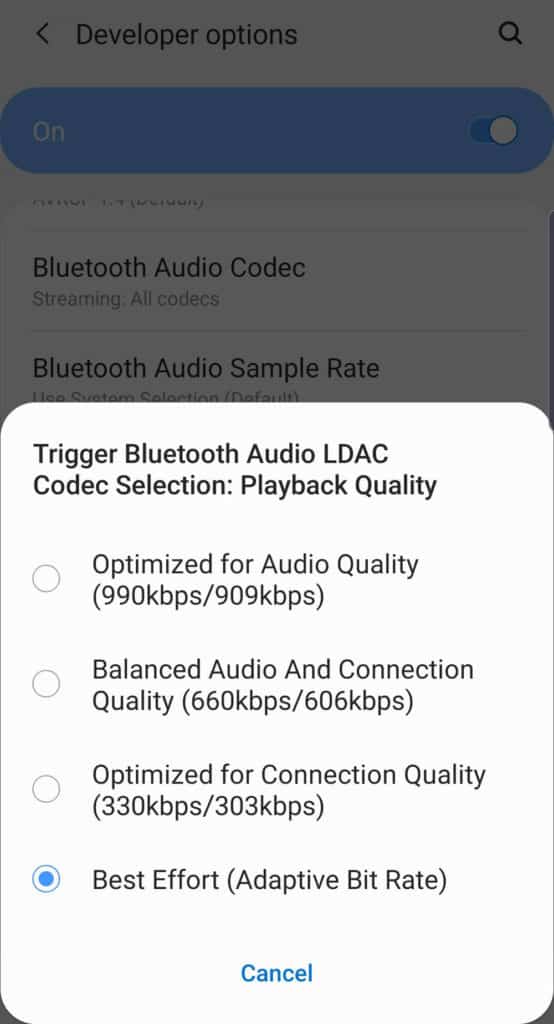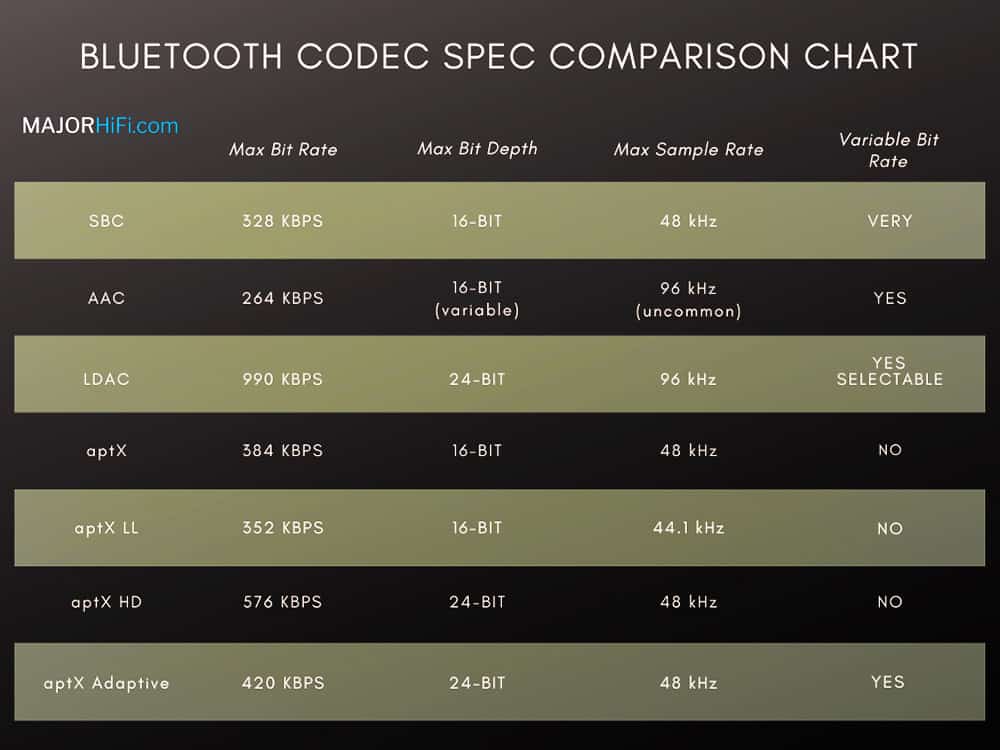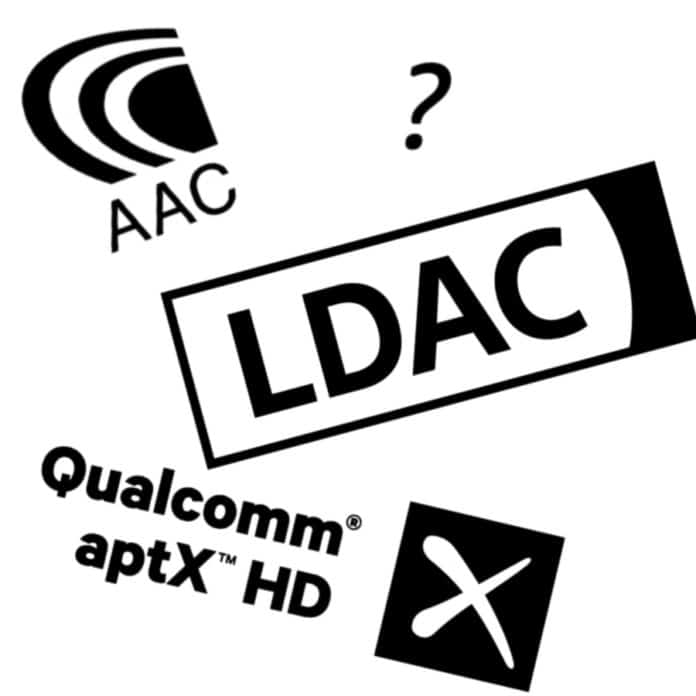Help Me Bluetooth Codecs, You’re my Only Hope.
The world of Bluetooth audio is as confusing as it is convenient. While the Bluetooth Special Interest Group constantly works to update the protocol’s specifications, other companies simultaneously develop new ways to encode and decode its wireless data stream. These are Bluetooth codecs. They have names like SBC, AAC, LDAC, and aptX. Here at Major HiFi, we would like to offer some assistance to those audio purists navigating these options.
Down to the Wire
If you’re an audiophile listening to lossless PCM (Pulse Code Modulation) audio through a wired connection, your file concerns differ from Bluetooth listeners. Assuming you’ve got a HiFi setup with DAC and FLAC, bit rate isn’t your primary concern. Sample rate and bit depth specs reveal more information about lossless and uncompressed audio quality.
To summarize as briefly as possible: Sample rate affects how many impressions or “samples” we have captured in a second of time. Bit depth affects the amount of dynamic information that can be taken within each of the samples. Bit depth deals with volume, and sample rate deals with frequency information.
A Little Bit About Bit Rate
Bit rate should just be determined by the equation of bit depth × sample rate. This isn’t always the case in digital music thanks to compression. Compression formats use different algorithms to encode a file to minimize its data size. MP3 compression made waves (pun intended) in the early days of portable digital audio because it could efficiently reproduce decent quality sound while simultaneously saving massive amounts of hard drive space.
Compression serves a slightly different purpose in the context of streaming. When we stream, playback occurs simultaneously with data transfer. This can come in many forms such as Bluetooth, Wi-Fi, or an online service. A plentiful amount of codecs have emerged to compensate for limited bandwidth and slow transmission/transfer speed. A lower bit rate typically results in a smoother stream, at the cost of some fidelity.
Cracking the Codec
SBC is what you’re using If you don’t have fancy Bluetooth Codecs on your headphones or device. The subband codec has a variable bit rate that results in unpredictable quality. It supports sample rates up to 48kHz, but in most cases, probably won’t.
AAC works a little differently than the other codecs. The name AAC itself actually refers to the type of audio that’s being played. Despite them both being lossy, compression used in Advanced Audio Coding is more efficient than an MP3. At the same bit rate, an AAC track is going to preserve better quality than an MP3.
What makes AAC Bluetooth unique is that there is very little encoding or decoding in the process of transmitting the audio data. The file would sound more or less the same through a wired or wireless connection. AAC is Apple’s weapon of choice and is used by default in iTunes.
LDAC is Sony’s proprietary Bluetooth streaming codec. At its maximum potential, it’s the codec with the highest quality. It streams at a max of 990kbps, translating to a sample rate of 96kHz and a bit depth of 24. LDAC swaps between fixed bit rates of 330, 660, and 990 kbps depending on available signal strength. It is also possible to select which bit rate you prefer on some devices.

In order to use LDAC, both the transmitting and receiving devices need a license agreement with Sony. Companies competing in the same markets as Sony could be unmotivated to support LDAC, and it’s possibly for this reason that LDAC isn’t as common seen as Qualcomm’s aptX encoding.
50 Shades of aptX
aptX in some form has been around for decades. Now, these codecs are developed by Qualcomm to serve a number of wireless audio needs. Let’s break them down.
aptX
Once, there was only aptX (previously apt-X). The eldest codec of the bunch has been around since the 80’s, and has been the more efficient alternative to SBC for headphones since 2009. It offers fixed bit rate data compression, providing steady quality in a Bluetooth audio stream.
aptX LL
If you’re watching a movie or (especially if) you’re playing a video game, latency makes a difference. Poor audio sync can ruin the emotional impact of a film, and could be the difference between winning and losing a video game. AptX LL is Qualcomm’s answer to this issue. This codec features the lowest bit rate and depth of the AptX family. It reduces lag to virtually nothing with consistently better sound than standard SBC Bluetooth audio.
aptX HD
Qualcomm created the aptX-HD codec with music in mind. A higher bit rate risks some latency for the greater good. This codec encodes and decodes a Bluetooth stream at 24-bit 48 kHz (above and beyond CD quality). The signal-to-noise ratio here is also greater than aptX or aptX LL.
aptX Adaptive
aptX Adaptive is supposed to be something of a miracle codec. This flavor of aptX promises a hyper-efficient compression algorithm that can deliver up to the same quality of aptX HD at nearly the same speed as aptX LL. It’s the first time Qualcomm has embraced a variable bit rate, with the purpose of adapting stream speeds for different media usage. Videos and games are optimized for sync.
I’ve never actually tried aptX Adaptive, as far as I know. It’s been easy for me on most devices to confirm which Bluetooth codecs I’m using, unless it’s aptX Adaptive. It’s supposedly backwards compatible with aptX and aptX HD enabled devices, so maybe I’ve used it unknowingly. Either way, this codec seems to be the best of everything aptX has to offer.

Bluetooth Codecs Summary
Consumer demand clearly shows that Bluetooth audio is here to stay. For people on-the-go, it makes life a lot more convenient. Sadly, no Bluetooth codecs offer a lossless solution thus far. However, we’ve seen the technology vastly improve in recent years. If you keep current with your research, you can make sure you have the best sound available.
Compare the ranking of various headphones, earbuds and in-ear monitors using our tools.
Discuss this, and much more, over on our forum.
---MAJORHIFI may receive commissions from retail offers.














